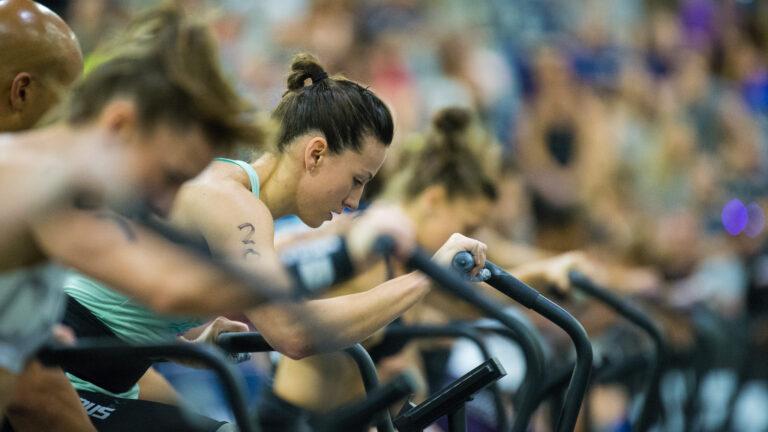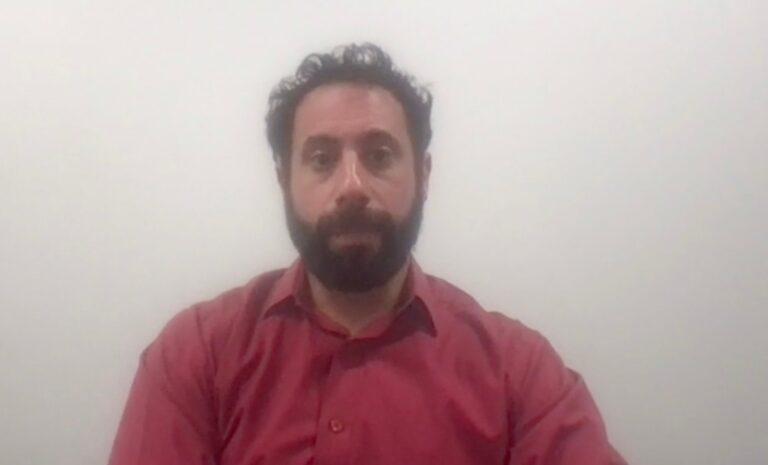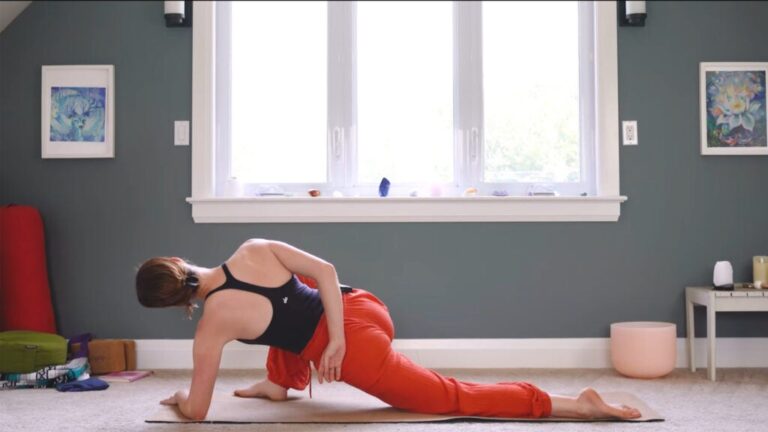Ommmm…
Mention yoga, and almost anyone can picture it perfectly. A darkened room, low music, and an instructor gently guiding you from one pose to the next.
But if you’ve taken a yoga class before, you might be hesitant to try it. Will you be able to hold the poses? Are you flexible enough?
Take a deep breath and inhale slowly; we’re here to help!
Let’s explore the basics of yoga to get you ready for your first class or self-guided session. We’ll even share the best yoga poses for beginners (with videos), so you can get started at home.
What Is Yoga?
Yoga is an ancient physical and spiritual practice that originated in northern India over 5,000 years ago.
Its name, yoga, originates in the Sanskrit word for “unite,” which is exactly what it does. Yoga brings together your physical, emotional, mental, and spiritual sides for an overall experience of peace, unity, and collective freedom.
Yoga practitioners, known as yogis, combine a number of techniques, including:
- Breathing exercises (pranayama)
- Chanting
- Controlled movement
- Meditation
- Postures (asanas)
- Relaxation
The Benefits of Yoga
Everyone approaches yoga for a different reason. You might be doing it for inner peace and calm, while someone right next to you in a yoga class is doing it to improve their mobility.
In the Western world, yoga has evolved into a mainly fitness pursuit, with a large number of practitioners focusing on its undeniable physical benefits.
However, it’s important to remember that the ultimate goal of yoga is less about looking good as it is about feeling good.
Not sure what yoga can do for you?
Here are some of the biggest benefits of a regular yoga practice.
- Promotes fitness
- Increases strength
- Improves heart health
- Boosts energy
- Supports weight management
- Improves balance and flexibility
- Eases arthritis symptoms
- Reduces stress
- Relaxes your mind and body
- Enhances your mood
Different Types of Yoga
Although they are all rooted in Eastern yogic practices, there are many different types of yoga. Which one you practice is completely up to you.
If one type doesn’t work for you, you can try one that might feel better or bring you closer to your goals.
These are some of the most common types of yoga.
Hatha Yoga
Often called yoga for beginners, hatha yoga focuses on the physical side of yoga. It focuses on the poses (asanas) more than on flowing movements or chanting. It may also include breathing techniques and/or meditation.
Kundalini Yoga
Kundalini yoga is centered on mental clarity and unlocking your life force to release stress and negative thoughts. It incorporates elements such as chanting and singing, in conjunction with careful breathing techniques.
Restorative Yoga
This unique style of yoga focuses on only a handful of poses, often holding them for five minutes or even longer. The goal is to completely relax the body into each pose. Restorative yoga often uses props for maximum comfort during each pose.
Vinyasa Yoga
Vinyasa yoga is a flowing style of yoga, with gentle but strong movements as opposed to static poses. It pairs mindful movement with intentional breathing. Vinyasa yoga is slow yet dynamic, stringing postures so that you can move seamlessly from one to another.
Is Modern Yoga Really What the Ancients Were Intending?
Learn the difference between traditional and modern yoga, how yoga has evolved over time, and what to expect in a modern yoga class.
Easy Yoga Poses for Beginners
Are you ready to begin your yoga practice?
You don’t have to join an expensive yoga studio to begin practicing yoga. You can do it just as easily in your own home. In fact, many people prefer to do yoga at home, where you can be comfortable and have more privacy.
But before you begin, here are a few things to keep in mind.
- Wear comfortable clothing. Ideally, your clothes will allow you to move freely.
- Consider using a yoga mat when you’re on the floor. Not only will it keep your clothes clean, it will be more comfortable. If you don’t have a yoga mat, you can use a towel or beach mat, instead.
- If you aren’t sure where to start, there are online yoga classes to guide you.
- Never do anything that doesn’t feel good to your body. If a pose is uncomfortable or causes pain in any way, adjust your posture or switch to the next pose. It’s okay if you feel your muscles stretching and working, but it’s not okay to feel pain.
Once you’re ready to begin, here are our favorite easy yoga poses that even the newest yogis can do.
Easy Pose (Sukhasana)
Let’s ease into your yoga practice with the simplest of poses.
How to Do It:
- Sit on the edge of your mat with your legs stretched out in front of you.
- Cross your shins, bringing the opposite foot underneath so you’re sitting cross-legged.
- Gently rest your hands on your knees or thighs, hands facing up or down (whichever is most comfortable).
Benefits: Easy pose strengthens the back, opens and aligns your hips and glutes, and stretches your knees and ankles. It improves your posture, grounds you, and can help relieve stress.
Tree Pose (Vrksasana)
This pose is a must for practicing your balance and rooting yourself into the ground.
How to Do It
- Stand with your feet hip-width apart.
- Shift your weight onto your right foot.
- Turn your left knee out and slide your left foot up your right leg.
- Rest your foot above or below your knee, avoiding any pressure on your knee.
- When you’re done, switch sides.
Benefits: Tree pose stretches and opens your hips, improves your balance, and strengthens your legs. It also calms your mind and helps you focus on emotional balance.
Downward-Facing Dog (Adho Mukha Svanasana)
Downward-facing dog is a full-body pose, engaging muscles in both your upper and lower body.
How to Do It
- Begin on the floor in a tabletop position, with your knees under your hips and your hands on the floor under your shoulders.
- Tuck your toes under and press your fingers into the floor.
- Lift your hips up to the ceiling, straightening your legs as much as possible, while keeping your head tucked between your arms.
Benefits: Downward-facing dog stretches your posterior chain, including your spine, glutes, and hamstrings. It strengthens your shoulders, arms, legs, and core. It brings a calming yet energizing energy.
Warrior 2 (Virabhadrasana)
This classic yoga pose can help you deepen your breathing and increase your ability to concentrate while also strengthening your body.
How to Do It
- Stand with your feet wide apart, heels aligned.
- Turn your right foot out about 90 degrees, and turn your left foot inward about 45 degrees.
- Straighten your arms and raise your hands to shoulder height, palms down and parallel to the floor. Your arms should be aligned with your legs.
- Bend your right knee, distributing your weight equally.
- Sink your hips low and keep your back leg straight.
- Actively reach out with your fingertips.
- Gaze over your front hand.
- When you’re done, switch sides.
Benefits: Warrior 2 strengthens your thighs and core. It also opens your chest and lungs, improving your circulation and respiration. Warrior 2 also helps improve your concentration and emotional stability.
Supine Spinal Twist (Supta Matsyendrasana)
This pose is ideal for stretching and relaxing your spine.
How to Do It
- Lie flat on your back.
- Extend your arms outward, perpendicular to your body, forming a t-shape.
- Bring your knees up and into your chest.
- Let your knees fall to the right.
- Turn your chin and gaze over your left shoulder.
- When you’re done, switch sides.
Benefits: Supine spinal twist improves your spinal flexibility and lengthens and strengthens your spine. It also opens your hip flexors and can relieve pain in your hips and back. It also calms your mind and relaxes tension in your body.
Child’s Pose (Balasana)
This pose can be used to create moments of rest between more challenging poses. It shows us all that rest is just as important as movement.
- Kneel on the floor, with your knees slightly wider than your hips, toes together.
- Sit back on your heels.
- Fold forward, with your torso resting on or between your thighs.
- Walk your hands out in front of you, shoulder-width apart.
- Try to touch your forehead to the floor, or get as close as you can.
Benefits: Child’s pose is wonderful for stretching your arms, back, hips, glutes, quadriceps, shins, and ankles. It also calms the nervous system, which can reduce headaches.
Corpse Pose (Savasana)
This is a lovely pose to end your yoga practice. You can stay in this pose as long as you’d like, meditating, clearing your mind, or focusing on a meaningful word or mantra.
How to Do It
- Lie on your back, legs spread slightly apart.
- Relax your feet so they fall gently to the side.
- Bring your arms next to your thighs, separated slightly from your body.
- Turn your palms up and allow your fingers to curl naturally.
- Breathe naturally and slowly.
- Try to hold this pose for 5-10 minutes.
Benefits: This is the maximum relaxation pose. It calms your nervous system, relaxes your mind, and reduces stress and anxiety. It can also help you connect to your deeper consciousness and promote spiritual awakening.
Final Thoughts
There’s a reason yoga has been around for centuries!
Yoga brings multiple benefits for your mind, body, and spirit. Even better, it’s easily adaptable for all fitness levels, making it something even beginners will enjoy.
You can try out a yoga class at your local gym, a yoga studio, or even in your own living room. If you decide to practice yoga at home, try our suggested poses while listening to your favorite relaxing music.
Namaste, friends!
You May Also Like…
The post Yoga for Beginners appeared first on Well.Org.
This content was originally published here.




















